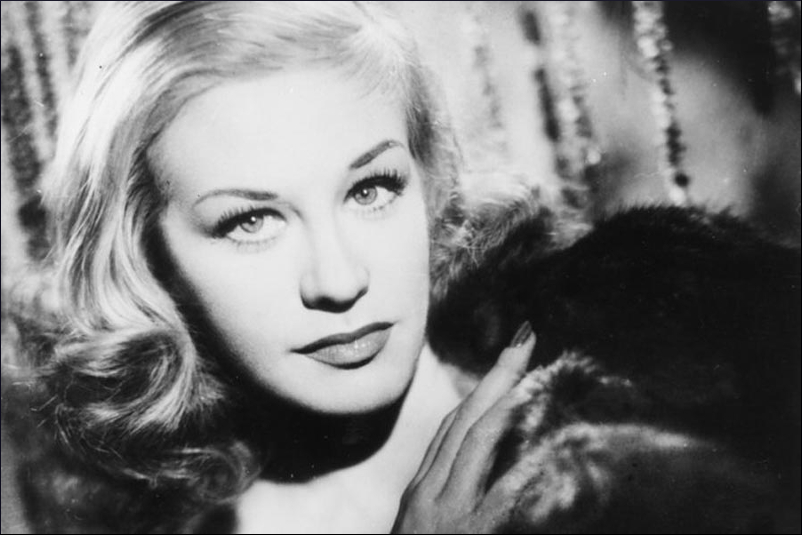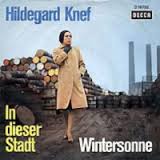Hildegard Knef's “In dieser Stadt” (In This City), from 1966, is a nostalgic song in which the narrator reminisces about her youth in an unspecified city. The chorus goes back and forth between the past and the present. In the first line, the singer states, “In dieser Stadt kenn ich mich aus” (I know my way around the city) because in the city, as she explains in the second line, “war ich mal zu Haus” (I was once at home). This is followed by her asking how the city looks now, closing with a repetition of the second line, which ends with a clipped “zu Hause” (at home) to underline the song’s prevailing nostalgic mood. The chorus functions like a steady framework, within which different scenes from the narrator’s childhood and teenage years are recounted chronologically in the strophes. These strophes, in turn, are almost consistently written in the simple past tense, as they describe scenes from the time when the narrator was still in her home city.
"Hildegard Knef's “In dieser Stadt” (In This City), from 1966, is a nostalgic song in which the narrator reminisces about her youth in an unspecified city"
The first strophe depicts the narrator’s younger years, and the city comes across as a quite desolate and dirty place. The streets on her daily walk to school are full of “leere bunte Zigarettenschachteln” (empty and colorful cigarette packs) and “zerknülltes Butterbrotpapier” (crumpled sandwich papers). Moreover, the fact that the narrator’s mother’s birthday flowers were plucked in front of the station indicates poverty. These elements can be viewed as references to the general economic and social situation in post-war Germany. The second strophe fast-forwards to the narrator’s teenage years, describing her first kiss, which was a disappointment and which prompted her to leave her home city: “Ich will raus!” (I want out!)

In the third and last strophe, this theme is picked up again, as the narrator stands at the “Bahnsteig” (railway platform), knowing that nothing keeps her in the city anymore. She is leaving into “zur großen Welt” (the big wide world). However, a dramatic change then occurs. In the last two lines, the focus suddenly changes to “heute” (now). In present tense, the narrator sings, “halt' ich es vor Heimweh nicht mehr aus” (I cannot stand the homesickness any longer), which she feels “nach allein durchweinten Nächten” (after lonely nights of crying). She has not found the happiness she was hoping for outside the city.
"The song is built around the metaphorical and visual opposition between clear and unclear. The narrator sees her home city very clearly in the present (“seh ich als ob's heute wär vor mir”)"
The song is built around the metaphorical and visual opposition between clear and unclear. The narrator sees her home city very clearly in the present (“seh ich als ob's heute wär vor mir”). In contrast, her view of what happened in the past is not so clear. Her first kiss was “zwischen zwei verdunkelten Laternen” (between two darkened lanterns) and the moments when she became convinced about leaving her city occurred “hinter blinden Scheiben” (behind milky windows), which also alludes to blindness. The song implies that the narrator came to her senses and sees things more clearly now. Her crying – logically connected to seeing, to vision – can therefore be interpreted as a cleansing of her eyes, after which she perceives her home city in a different, more positive light.


